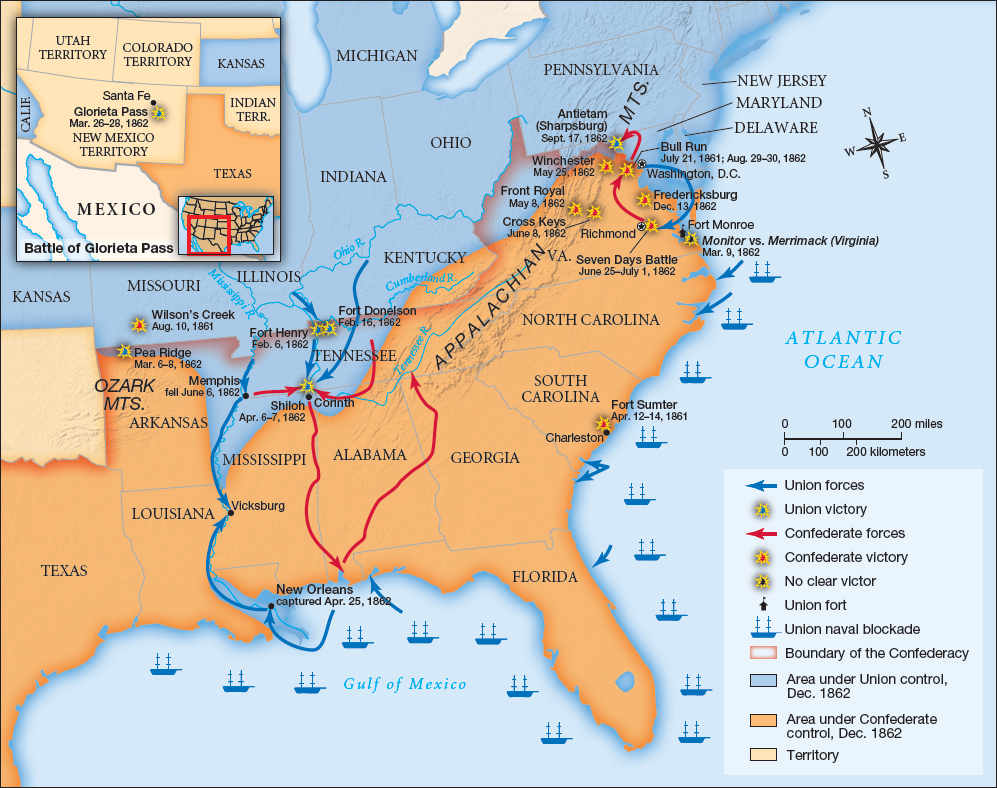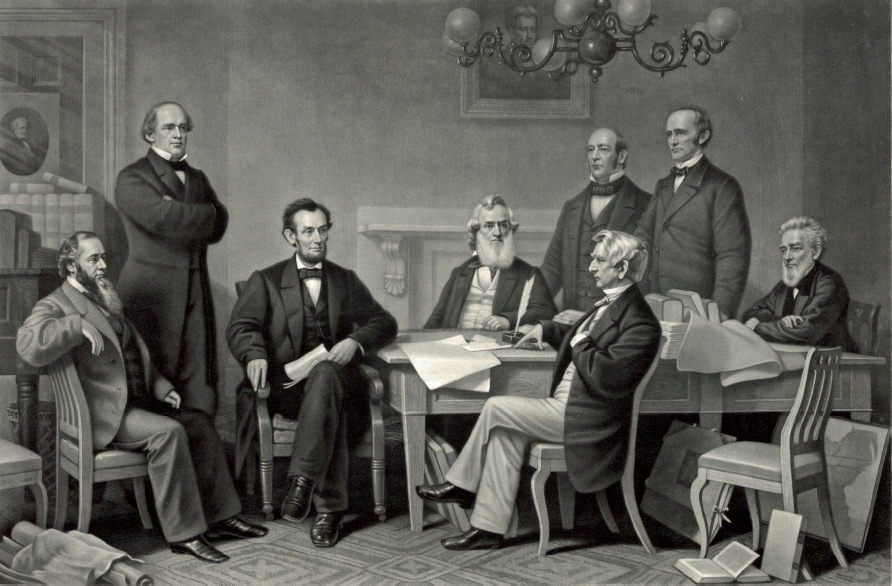Exploring American Histories: Printed Page 399
Exploring American Histories, Value Edition: Printed Page 329
Fighting for the Right to Fight
From the start, the Union army recruited a wide array of Americans. Indeed, nearly every ethnic and racial group served in Union ranks except African Americans. German and Irish immigrants; Catholic, Protestant, and Jewish Americans; native-born whites from the Northeast and Midwest; and Mexican American soldiers in the West all fought with the Union army. In an effort to eliminate this one exception, abolitionists had long argued that African Americans would make excellent soldiers, and Radical Republicans in Congress emphasized the military advantages of allowing black enlistment. As Massachusetts senator Charles Sumner explained, “You will observe that I propose no crusade for abolition. [Emancipation] is to be presented strictly as a measure of military necessity.”
Meanwhile American Indians fought on both sides. The Comanches negotiated with both Union and Confederate agents while raiding the Texas frontier for horses and cattle. The Confederacy gained the greatest support from slaveholding Indians who had earlier been removed from the Southeast. The Cherokee general Stand Watie led a pan-Indian force that battled alongside white Confederate troops on the western frontier. However, most members of the Cherokee and other southeastern tribes, along with Osage, Delaware, and Seneca Indians, sided with the Union. Ely Parker, a Seneca sachem and engineer, rose to become a lieutenant colonel in the Union army, serving with General Ulysses S. Grant.
While some Indian regiments were rejected by state officials, African Americans were barred from enlisting by federal authority. In 1862, however, a series of military defeats helped transform northern attitudes. Although Union forces gained ground along the southern Missis-sippi River, they lost important battles farther north. In the spring of 1862, Confederate troops led by Stonewall Jackson won a series of stunning victories against three Union armies in Virginia’s Shenandoah Valley. That June and July, General Robert E. Lee fought General George B. McClellan to a standstill in the Seven Days Battle near Richmond. Then in August, Lee, Jackson, and General James Longstreet joined forces to defeat Union troops at the Second Battle of Bull Run (Map 13.1).

As the war turned against the North, the North turned against slavery. In April 1862, Congress approved a measure to abolish slavery in the District of Columbia, symbolizing a significant shift in Union sentiment. During that bloody summer, Congress passed a second confiscation act, declaring that the slaves of anyone who supported the Confederacy should be “forever free of their servitude, and not again held as slaves.” Finally, Congress passed a militia act that allowed “persons of African descent” to be employed in “any military or naval service for which they may be found competent.” Lincoln quickly signed these acts into law.
Yet support for the 1862 militia act also built on Union victories. In April 1862, a Union blockade led to the capture of New Orleans, while the Battle of Shiloh in Tennessee provided the army entrée to the Mississippi valley. There Union troops came face-to-face with slavery. Few of these soldiers were abolitionists, but many were shocked by what they saw. At some captured plantations, soldiers discovered instruments used to torture slaves. One Union soldier reported he had seen “enough of the horror of slavery to make one an Abolitionist forever.” Local blacks also provided valuable intelligence to Union officers.
The rising death toll also increased support for African American enlistment. The Battle of Shiloh was the bloodiest battle in American history up to that point. Earlier battles had resulted in a few hundred or even a few thousand casualties, but Shiloh raised the carnage to a new level. General Grant marveled, “I saw an open field . . . so covered with dead that it would have been possible to walk across the clearing, in any direction, stepping only on dead bodies without a foot touching the ground.” As the war continued, such deadly battles became routine. The Union army would need every available man to sustain its effort against the Confederates.
Amid the roller coaster of victory and defeat, African Americans gave practical force to the 1862 militia act. In October 1862, a group of African American soldiers in the First Kansas Colored Volunteers repulsed Confederates at a battle in Missouri. Early the next year, another black regiment—the Massachusetts Fifty-fourth—attracted recruits from across the North. Frederick Douglass helped recruit a hundred men from New York State, including his three sons—Charles, Lewis, and Frederick Jr. In the South, Colonel Thomas Wentworth Higginson and other abolitionist officers organized former slaves into units like the First South Carolina Volunteers. By late 1863, tens of thousands of African American soldiers were serving with distinction and contributing to key northern victories.
